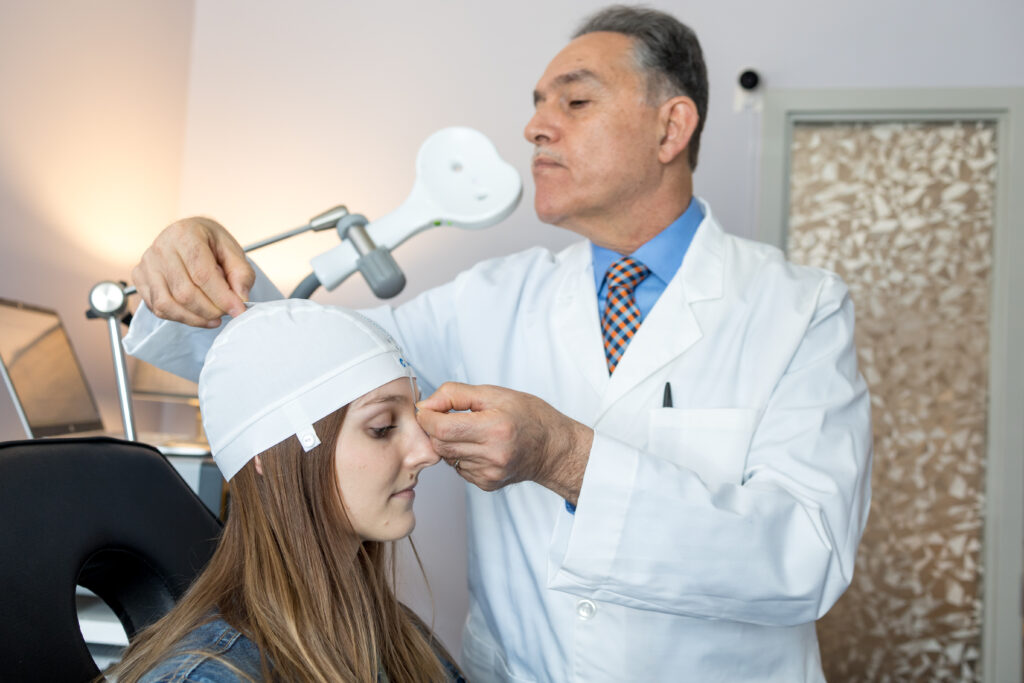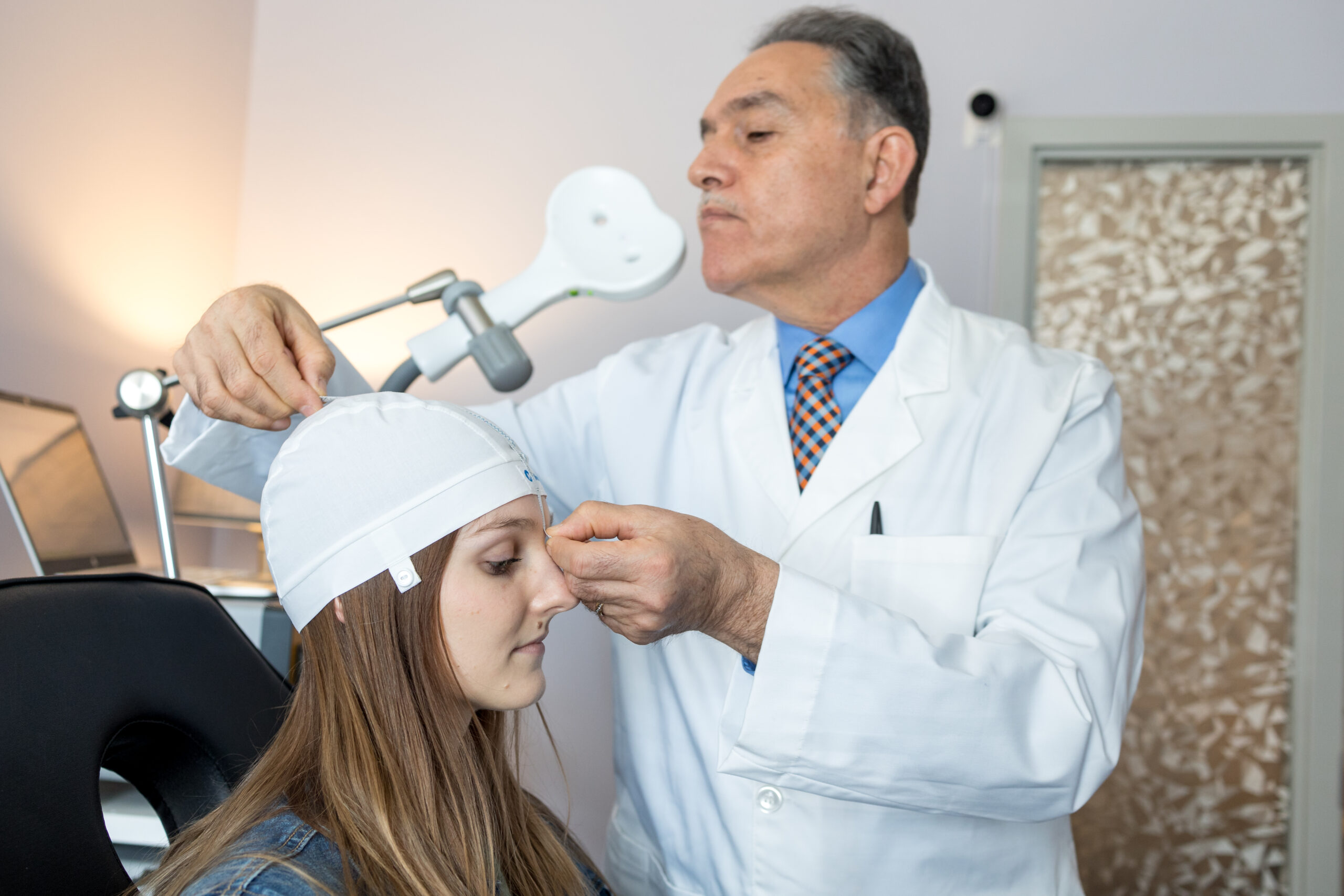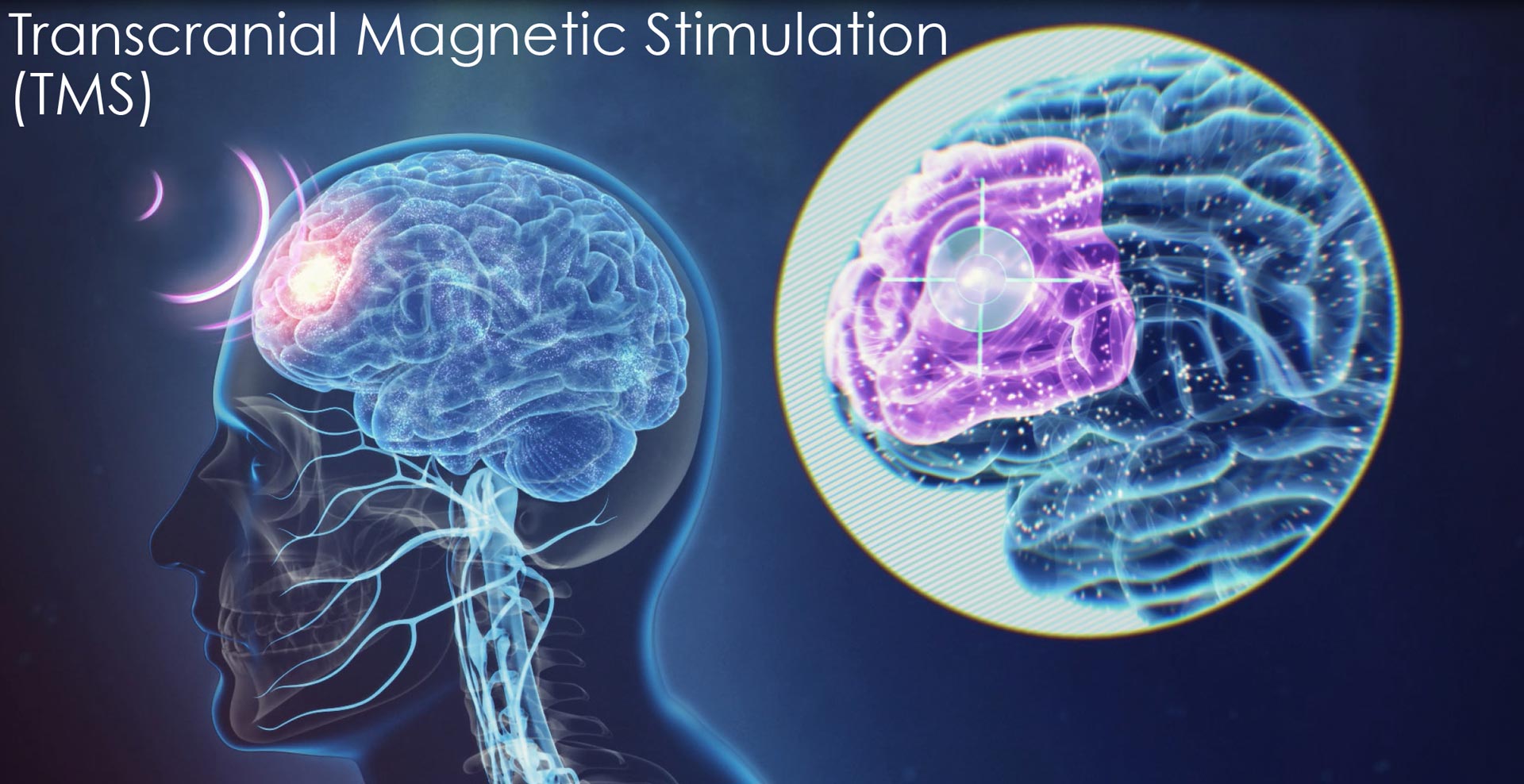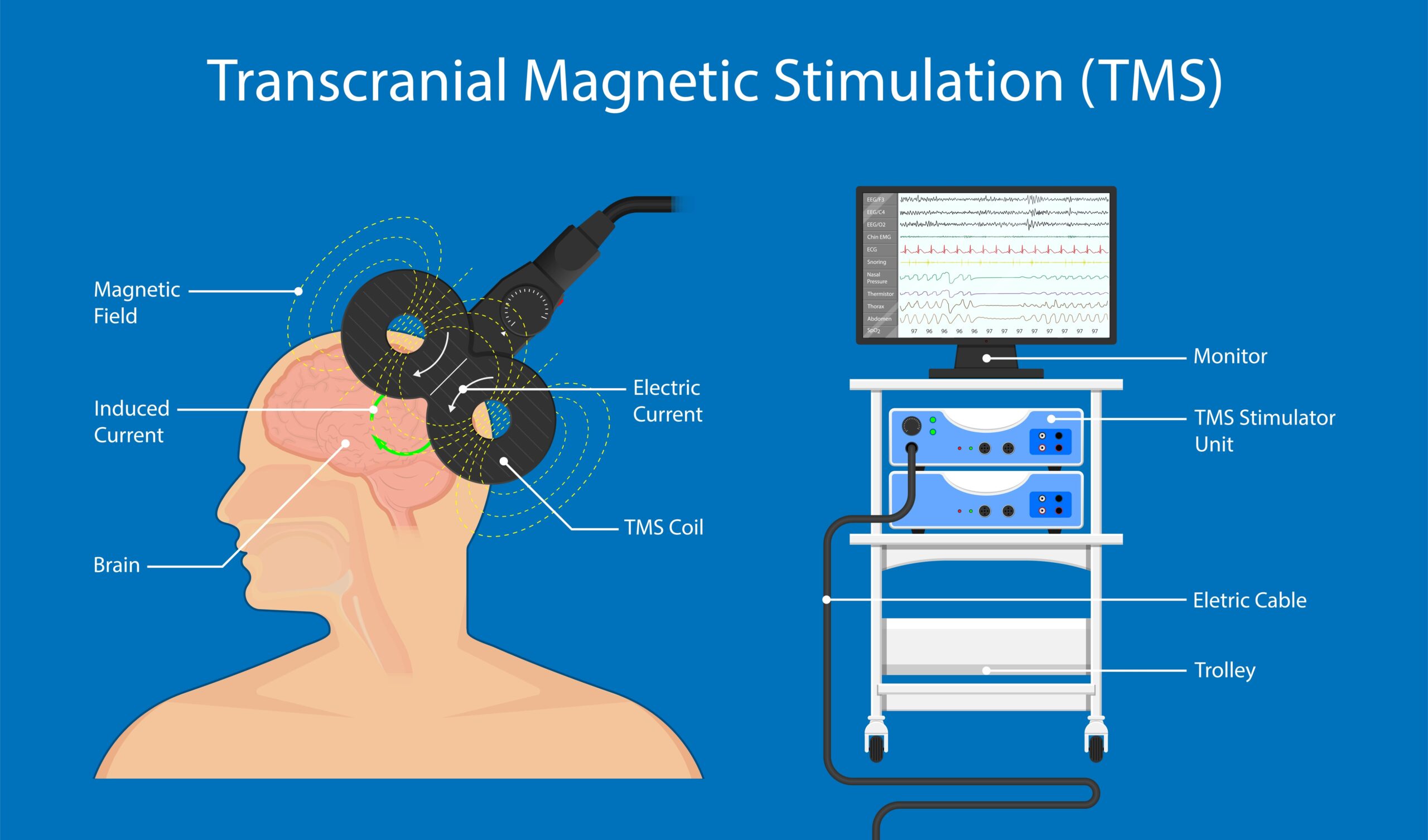In the ever-evolving landscape of mental health treatment, Transcranial Magnetic Stimulation (TMS) therapy has emerged as a potent, non-drug, non-invasive technique. With its revolutionary approach and proven effectiveness, TMS therapy has been instrumental in treating depression and various behavioral health conditions. Moreover, it’s now being used to address physical conditions like traumatic brain injuries, concussion syndrome, and strokes.
The Science Behind TMS Therapy
TMS therapy leverages a magnetic field to create an electrical current within the brain. This current stimulates neurons and induces changes in brain activity, which can help mitigate symptoms of depression and other conditions.
TMS therapy uses a magnetic field to create an electrical current within the brain through a process called electromagnetic induction. The TMS device consists of an electric pulse generator or stimulator connected to a magnetic coil placed on the scalp. The stimulator generates a changing electric current within the coil, which creates a varying magnetic field that induces a current within a region in the brain itself.
The magnetic pulses cause small electrical currents that stimulate nerve cells in the targeted region of the brain. The magnetic fields generated by the TMS coil are similar to those produced by a magnetic resonance imaging (MRI) machine. The magnetic fields do not directly affect the whole brain but only reach about 2-3 centimeters into the brain directly beneath the treatment coil. As these magnetic fields move into the brain, they produce very small electrical currents that activate cells within the brain, which are thought to release neurotransmitters like serotonin, norepinephrine, and dopamine.
Administering TMS Therapy

The administration of TMS therapy involves placing a coil over the scalp, at a specific location over the brain. This coil emits a series of magnetic pulses that stimulate the targeted brain area. These magnetic pulses increase brain cell connectivity and communication. Importantly, this process is painless and non-invasive, eliminating the need for anesthesia or surgery.
The TMS therapy is administered in an outpatient setting, usually at a clinic that specializes in TMS therapy. Some clinics have a doctor’s office look and feel, while others have a more relaxing and spa-like atmosphere to reduce the anxiety a patient may feel when starting a TMS regimen.
TMS therapy is not a “one and done” treatment. It requires multiple treatments spread out over several weeks. The standard TMS therapy protocol for depression is 36 treatments, spread out over six weeks with a weening off period after that. The sessions themselves can be as little as three minutes.
Protocols for different conditions have different treatment and session length. The other variables with a TMS protocol include the area where the coil is placed, and the intensity of the pulses (the dose).
Exploring the Benefits of TMS Therapy
TMS therapy stands out for its safety and tolerability. Side effects are minimal, typically limited to mild discomfort during the procedure, like a tapping or tingling sensation on the scalp. These sensations are transient and typically subside quickly.
TMS therapy’s effectiveness is particularly pronounced in treating depression, especially in individuals unresponsive to other treatments such as medication or talk therapy. Significantly, TMS therapy has gained FDA approval as a treatment for such patients, testifying to its effectiveness and safety.
FDA approval paved the way for health insurance to start paying for TMS for depression and, most recently, OCD. As of this writing, all major health insurance companies provide reimbursement for TMS for depression, including Medicare and Medicaid.
The Expanding Horizon of TMS Therapy
Beyond treating depression, TMS therapy is under investigation for potential applicability in treating other conditions. Research indicates promising results for the treatment of anxiety, post-traumatic stress disorder (PTSD), substance abuse, and chronic pain using TMS therapy.
TMS therapy, as a relatively new technology, is a vast and fertile field for research. There’s much to learn about this therapy, and the scope for its application continues to widen as more research is conducted. Almost every day, a new study about TMS is released.
Addressing the Limitations of TMS Therapy
While TMS therapy promises great potential, it comes with several limitations. The effects of TMS therapy may not be long-lasting in some individuals, necessitating ongoing treatment to sustain the benefits. Some patients have been able to maintain their baseline results by engaging in a maintenance protocol consisting of monthly or as prescribed treatments.
Also, TMS therapy may not be equally effective for everyone. Some conditions, such as bipolar disorder, may not respond to TMS or even cause a manic episode. Some may experience side effects like headaches or dizziness. These limitations, however, do not detract from the potential benefits of TMS therapy but instead, serve as areas for further research and improvement.
Conclusion
In conclusion, TMS therapy represents a significant stride forward in mental health treatment. Despite its limitations, the benefits it offers are substantial, providing hope for individuals struggling with conditions previously resistant to treatment.
As we continue to expand our understanding and application of TMS therapy, we can look forward to more effective, personalized mental health treatments. The ongoing exploration of TMS therapy holds promise for a future where mental wellness is within everyone’s reach.
Sources:
Transcranial Magnetic Stimulation – Wikipedia
Transcranial Magnetic Stimulation (TMS) – Cleveland Clinic
How TMS Works – UNC School of Medicine
Transcranial Magnetic Stimulation (TMS) – Anxiety and Depression Association of America (ADAA)





